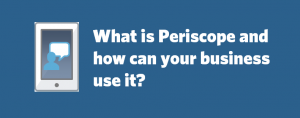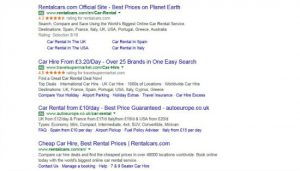
All Sales are Not Equal
You might be surprised to learn that some purchases actually increase customer churn. After buying software, many customers discover that it’s not a good fit for their needs, which prompts them to cancel their subscriptions. With new revenue alone as the goal, a large number of companies waste significant time and money attracting and attempting to keep the wrong customers.
On the other hand, when your company appeals to customers whose needs more closely match your solutions, retention increases and costs decrease. That’s why defining, delivering, and communicating a clear value proposition is the first and most important step in achieving high customer loyalty.
Benefits of Focus
A company’s natural tendency is to appeal to everyone. Entrepreneurs dream big, believing all prospects can benefit from their new idea. Investors, anxious for a massive payday, often support the viewpoint, too. Marketing follows their lead by casting the widest possible net to generate leads, and salespeople sell as much as they can to whoever will buy. When it comes to markets, bigger and broader always seems to trump narrower and deeper.
But there’s a high cost to generalizing. Lack of crisp market focus causes developers to add irrelevant features to products and services, increasing complexity without good reason. Absent a distinctive target audience and a clear message, marketing spends more money to compensate for low response rates. The sales cycle gets longer and more expensive, too. Closing sales becomes difficult because there’s more competition and less differentiation. Meanwhile, the operations team must support a wider range of needs, reducing economies of scale. Facing slower growth and higher costs, executives must then make difficult choices about the road ahead. A lack of market clarity inevitably leads to wasted time, resources, and money, causing a perilous situation for the enterprise. .
Focus is the solution. Greater segment concentration yields faster revenue ramps and higher profitability, as well as higher customer loyalty:
- Context begets value. The more relevant your solution, the more your customer will perceive value and purchase from you. For example, a graphic designer will be more enthusiastic about a utility that makes her visual assets easier to archive, edit, and distribute than a vanilla application that simply stores her various files online. Customers find increased utility addressing more aspects of a particular problem than fewer aspects of a general problem.
- Trust precedes loyalty. When customer expectations for value and quality are clearly set and consistency met, trust grows. When you state explicit value rather than cite vague platitudes, and then follow through on your promises, your actions have significant impact. For example, if your company specifically promises to save a customer substantial time searching for visual content, the customer has more belief in you when she finds the promise realized. Customers are more loyal to suppliers they trust.
- Understanding promotes caring. The more you relate to customers in the terms they care about, the more the customer has in common with you and the stronger your relationship. For example, if the customer is a marketer who uses an application for sharing branded materials, your company’s marketing savvy would be a great match because you can speak her language. Greater shared understanding stimulates mutual appreciation and personal connection.
When your company is focused, your Customer Success team is more effective, too. When more of the “right” (and fewer of the “wrong”) customers gravitate to the firm, CSMs don’t waste time trying to “save” lost causes. CSMs can concentrate deeply on the application or the industry knowledge common to a group of customers, thereby adding more value and enhancing customer loyalty. In this scenario, departmental metrics even make more sense. Churn rates become more meaningful when they no longer include customers who never should have purchased in the first place.
Winning Value Propositions
Achieving laser focus requires some work, but the following step-by-step technique can help companies choose, deliver, and communicate compelling value[1]:
- Decide who the company is (and is not) going after. Your starting point involves formally rejecting less attractive opportunities in order to double down on the more captivating ones. Nobody likes to hear or say the word “no,” but without market discipline, your company quickly falls into the trap of wanting to be all things to all people.
- Make benefits explicit and relevant. For the chosen segment, formulate specific, measurable, end-result benefits customers will enjoy. Clarity is paramount. It’s best to state exactly how much faster, easier, more accurate, etc. in terms that are meaningful to target customers.
- Articulate the costs and tradeoffs. Consider carefully what you’re asking customers to pay or give up. Doing so generates ideas to make changing to your SaaS software less traumatic for customers and prepares you to overcome objections in the sales process.
- Deploy throughout the organization. If you state that your integration process saves the customer half the time it normally takes, make sure you can prove it. For example, higher professional services resource availability or more extensive data conversion tools may be strategies that help your company deliver its promise. Derive design specifications, process requirements, metrics, and all other day-to-day operations from your value propositions.
If you want to keep more customers, it is critical to begin by marketing and selling to the right ones. Sharp value propositions help you achieve greater focus, increase value, build relevance, and strengthen relationships. Refine yours and see the difference.
[1] Lanning, M. and Phillips, L. “Building Market-Focused Organizations,” (Gemini Consulting White Paper, 1992).
Business & Finance Articles on Business 2 Community
(95)
Report Post





